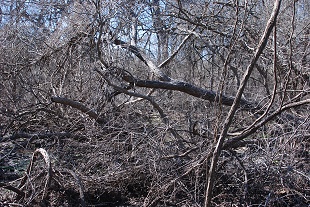
Two years of drought weakened trees; some died and others dropped limbs. When the rains returned, we had something like 15 inches in the first month (half the normal annual rainfall), with one flash flood after another in the creek woods, as well as strong winds. Here’s one result–a tree that had been supporting a canopy of vines came down, making a tangle that caught other flood debris. Winter-resident birds think it’s a great playground.
Floods on this creek spread out through the woods, carving many little “side channels,” most originating at a bend in the creek where water jumps the bank. The water gets high enough, and moves fast enough, to lift and move fallen snags.
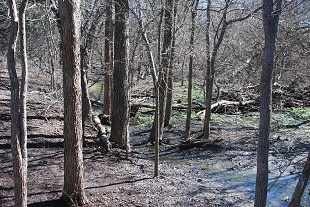
Rushing water sweeps away leaves accumulated during dry spells, leaving the ground bare except for the piles of storm debris. The alternation of drought and flood means there’s not enough time for organic material to rot into richer soil. Soil here is “built” by water transport.
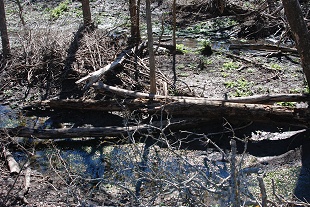
Smaller debris–limbs, twigs, vine tangles, etc.–catches behind standing trees or the larger heavier stuff, making temporary (up to the next flood) habitat for birds, small animals, and insects:
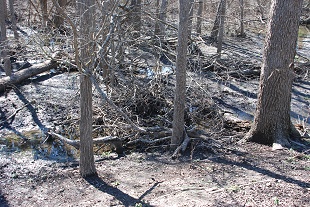
Some of the overflow channels are also fed by below-surface seeps and temporary springs that provide filtered, high-quality water:
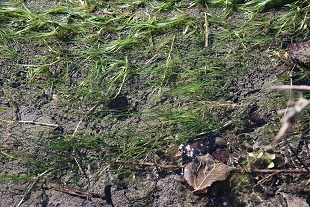
The little dark circle is a small crayfish hole; you can tell the current is flowing from right to left. This image is from a section of the main east-side overflow channel in the creek woods, shown below about halfway from the creek to the south fence:
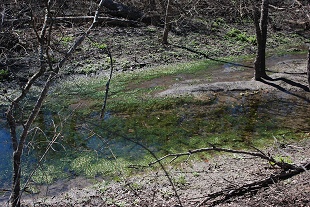
From a little farther downstream, it’s clear that there are two branches.
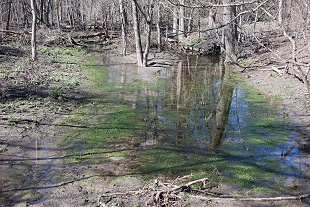
The east woods trail parallels the water on the right; between that trail and the creek (here some 40 yards to the left) it floods the most. These pictures were taken about 24 hours after the most recent flood, and even in rubber boots it would have been difficult to get to the creek this far down.
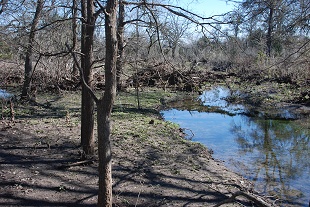
At the south fenceline, debris caught on the fence defines the boundary across “the south swamp”–a deeper arc-shaped pool that receives overflow from several directions. Outflow rejoins the creek about 50 yards downstream.
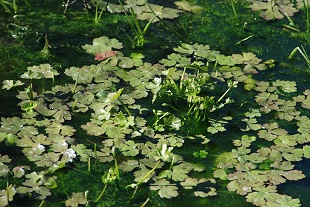
Some of the channels support not just algae in winter (when it’s warm enough and sunny, and there’s no shade canopy overhead), but other water plants. Here, a backwater off the east overflow channel has a mix of algae and higher plants.
Though storms take down favorite trees and move the surface level of the creek woods around, the wind and flood also renew the woods–this 8-10 acre patch is never the same after a storm. It’s particularly fun to look at the animal tracks that show up after a storm–to discover, as I did this week, that there’s a bobcat back in the woods, besides the coyote, fox, skunks, armadillos, rabbits, squirrels, raccoons, etc. So even when I nearly lose a boot to the muck, it’s worth a slog through the woods after a storm.